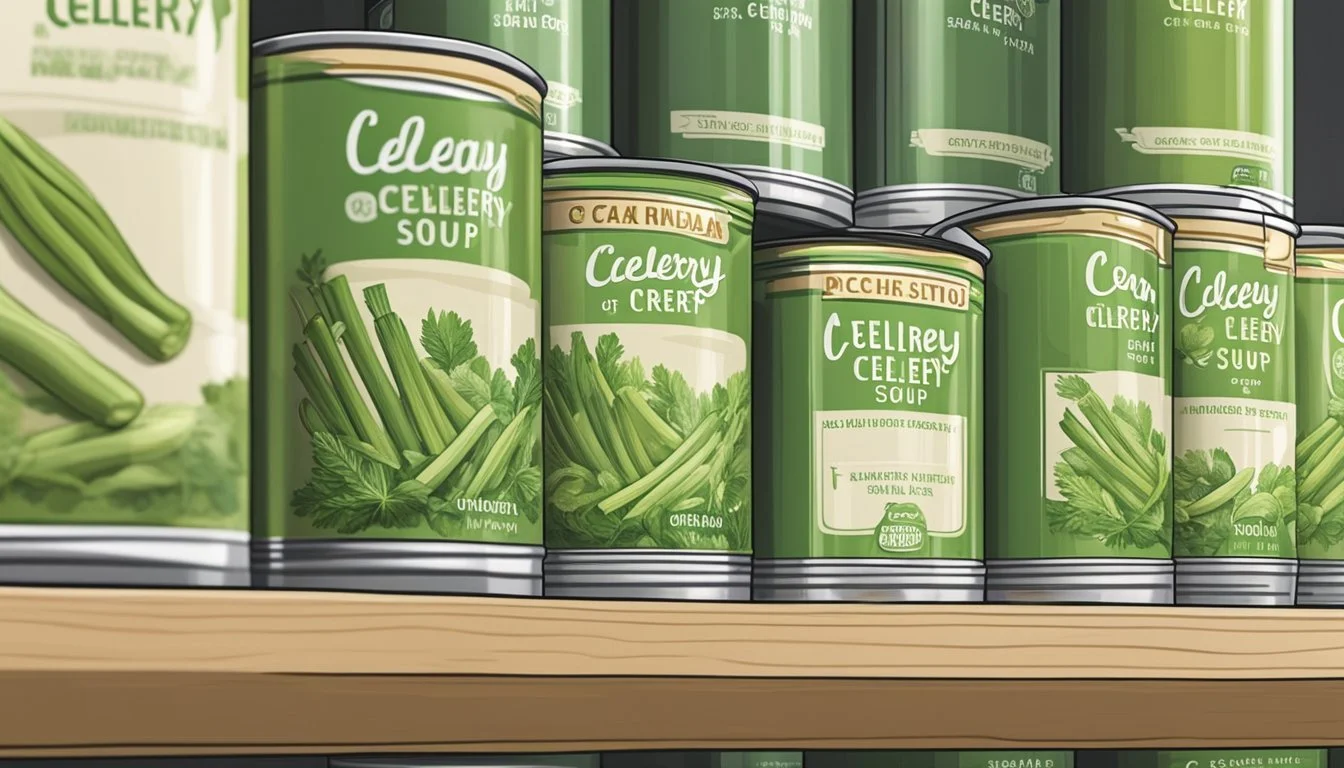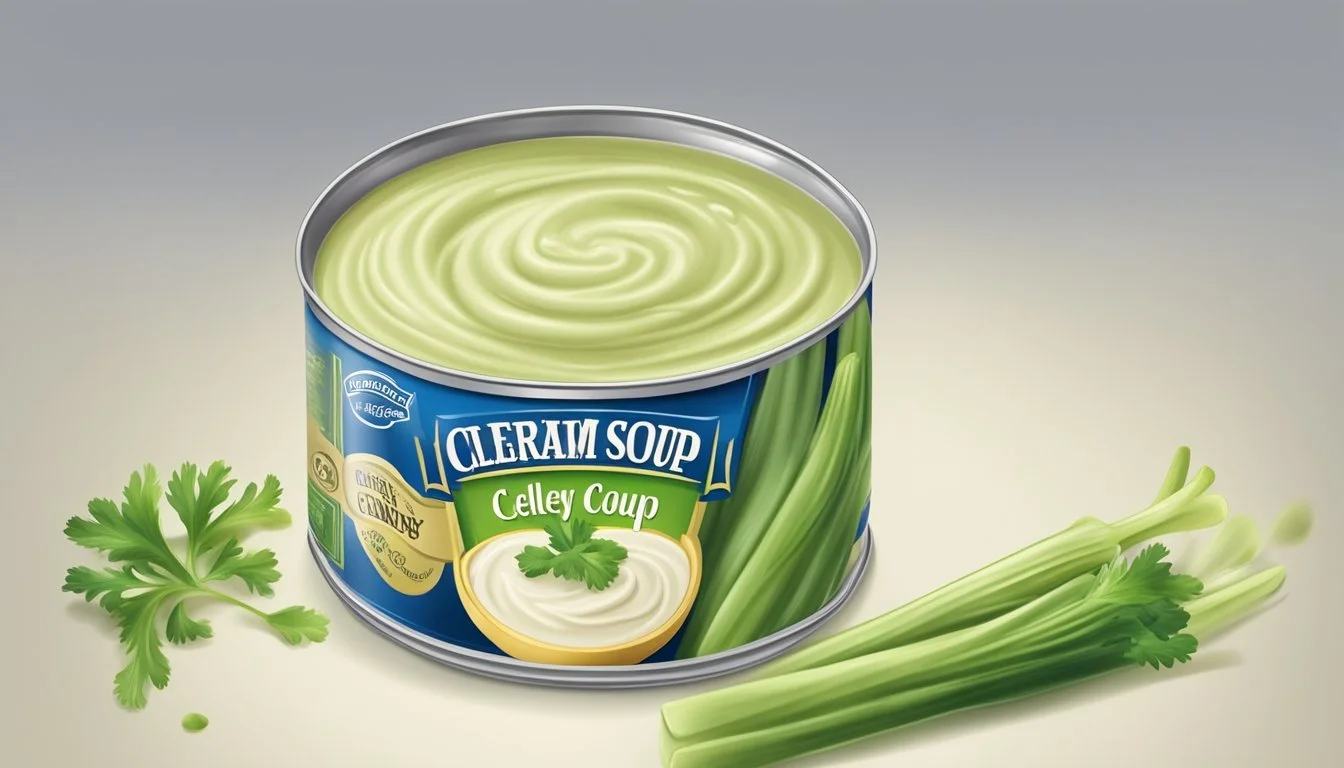Does Canned Cream of Celery Soup Expire?
Shelf Life and Storage Tips
Canned cream of celery soup is a pantry staple for many households, known for its long shelf life and versatility in recipes. Properly stored, an unopened can of cream of celery soup will generally maintain its best quality for about 3 to 5 years, although it often remains safe to consume beyond this period. This durability makes it a reliable component of emergency food supplies and everyday kitchen inventories.
But what happens after the expiration date on the can? According to food safety guidelines, canned foods that are stored correctly and have undamaged packaging typically remain safe to eat even after their best-by dates. This applies to cream of celery soup as well, provided there are no signs of spoilage like bulging cans, off odors, or unusual colors.
When it comes to opened canned soup, the story changes slightly. Once opened, cream of celery soup should be refrigerated and consumed within 3 to 4 days to ensure safety and taste. This information can help readers make informed decisions about using their canned soup supplies wisely and avoid food waste.
Understanding Canned Foods
Canned foods provide a convenient and often economical option for long-term food storage. They are designed to last for extended periods while maintaining safety and quality when stored properly.
Composition and Packaging
Canned foods are typically sealed in metal containers or glass jars designed to prevent contamination and spoilage. The packaging process involves sealing food in airtight containers and then heating them to destroy bacteria and enzymes. This method ensures the food remains safe and shelf-stable for several years.
The composition of canned goods includes both low-acid and high-acid options. Low-acid foods, such as meats and vegetables, require more intense heat treatment compared to high-acid foods like fruits and tomatoes. This difference in treatment affects their respective shelf lives.
Shelf Life Factors
Several factors influence the shelf life of canned foods. The type of food is a primary consideration, with low-acid foods like soups, meats, and vegetables typically lasting longer than high-acid foods. However, even within low-acid foods, items like evaporated milk may not last as long as canned beans.
Storage conditions significantly impact shelf life. Canned goods should be stored in a cool, dry place to prevent the metal from corroding and the food from spoiling. Extreme temperatures, especially heat, can cause the food quality to degrade faster than stated by the expiration date.
Signs of Spoilage
Recognizing signs of spoilage in canned foods is crucial for safety. Bulging cans, particularly at the seams or lids, are a clear indication of bacterial growth and gas production. Dents or leaks in the can may also compromise the seal, allowing bacteria to infiltrate.
When opening a can, check for unusual odors, colors, or textures. For example, if the food has an off smell or appears discolored, it is best to discard it. Sour or metallic tastes are other indicators that the food is no longer safe to consume.
Monitoring canned goods for these signs can help ensure that the food remains both safe and enjoyable to eat for the duration of its shelf life.
Safety and Quality of Canned Cream of Celery Soup
Proper storage and inspection of canned cream of celery soup play crucial roles in maintaining both safety and quality. Key considerations involve examining the condition of the can and ensuring it is stored correctly.
Assessing Can Integrity
Inspecting the can for any signs of damage is essential. Preserve safety by avoiding cans that are:
Rusty: Rust can indicate potential contamination.
Dented: Dents, especially on seams and lids, can compromise the seal and safety.
Leaking or Bulging: These are clear signs that the contents may be unsafe to consume.
Follow these guidelines to ensure the canned soup is safe to eat, even if past its "best-by" or "best if used by" date. Always discard cans showing these defects to avoid health risks.
Storage Best Practices
Proper storage extends the shelf life of canned cream of celery soup. To maximize quality:
Keep in a cool, dry place: Ideal storage temperatures range from 50°F to 70°F.
Avoid extreme temperatures: Heat can cause cans to swell, while freezing can compromise the seal.
Rotate stock: Use older cans first and ensure "first in, first out" to maintain quality.
By adhering to these practices, the soup's safety and taste can remain optimal longer than the manufacturer's estimated expiration date. Refrigeration after opening is necessary, and the soup should be consumed within 3 to 4 days for best quality.
Proper Storage Techniques
Proper storage of canned cream of celery soup is essential for maintaining its quality and extending its shelf life. This section covers the best practices for storing both unopened and opened cans to ensure safety and freshness.
Unopened Cans
Unopened cans of cream of celery soup should be stored in a cool, dry place, ideally between 50 and 70 degrees Fahrenheit. A pantry or cupboard away from direct sunlight works well. High temperatures can cause the can to rust or bulge, which may indicate spoilage.
It's also important to check cans for any signs of damage before storing them. Avoid storing cans that are leaking, rusting, or deeply dented. Stack the cans so that the older ones are used first, practicing a first-in, first-out (FIFO) system to ensure older cans are consumed before they expire.
Opened Cans
Once opened, cream of celery soup should be transferred from the can to an airtight container. This prevents contamination and helps retain its flavor. The soup should be refrigerated immediately and kept at or below 40 degrees Fahrenheit.
Opened cream of celery soup should be consumed within 3 to 4 days for optimal safety and taste. Refrigerated storage slows down the growth of bacteria, helping to keep the soup fresh. For even longer storage, consider freezing the soup in a freezer-safe container. Frozen soup can last up to 2-3 months but might exhibit slight changes in texture.
By following these guidelines, the quality and safety of canned cream of celery soup can be maintained effectively.
Recognizing Spoilage in Cream of Celery Soup
Properly identifying signs of spoilage in cream of celery soup is crucial to avoid health risks. The most noticeable indicators include changes in appearance, smell, texture, and flavor.
Visual and Olfactory Indicators
Look for changes in color and the presence of mold. Spoiled cream of celery soup may appear darker or have a greenish tint. Mold is a clear sign of spoilage and should not be ignored. Examine both the soup and the can or container for any rust, dents, or leaks, as compromised packaging can lead to spoilage.
Smell the soup. An off odor is a strong indicator of spoilage. Fresh cream of celery soup should have a mild, pleasant smell. If the soup emits a sour or rancid smell, it is no longer safe to consume.
Texture and Flavor Changes
Pay attention to the texture of the soup. Spoiled cream of celery soup may become excessively thick, lumpy, or slimy. These textural changes indicate bacterial growth and spoilage. Fresh soup should have a smooth, creamy consistency.
Similarly, tasting the soup can reveal spoilage. Spoiled soup often has an off or sour flavor. Even minor deviations from the expected taste are cause for concern. Healthy cream of celery soup should taste creamy with the distinct flavor of celery and other vegetables used in its preparation.
Health Implications of Consuming Expired Soups
Consuming expired soups can lead to potential health risks and impacts on nutritional quality. It is essential to understand the food safety concerns and how the freshness of the product might be affected over time.
Foodborne Illness Risks
Eating expired canned soup poses risks due to the potential growth of harmful bacteria and contamination. Even though canned foods are often preserved in sterile conditions, consuming them beyond their expiration date can lead to serious foodborne illnesses.
Botulism, caused by Clostridium botulinum, is a major concern with improperly stored or expired canned goods. Symptoms include nausea, vomiting, and muscle paralysis, and it can be fatal if untreated. Although rare, the risk increases with damaged or improperly stored cans.
Mild contamination can also occur, leading to symptoms such as stomach cramps, diarrhea, and fever. It is important to inspect the can for signs of spoilage, such as bulging, rust, or leaks, as these can indicate compromised food safety.
Nutrition and Freshness
Over time, the nutritional value of canned soups can degrade. Key nutrients like vitamins and minerals may diminish, affecting the soup's overall health benefits. Freshness also declines, impacting flavor and texture.
For instance, vitamin C is sensitive to heat and light and can degrade even when canned soup is stored properly. Other nutrients like protein and fiber remain more stable but can still lose potency.
Taste and consistency are also affected, as ingredients like cream and vegetables may lose their desired texture. These changes can make the soup less appealing and less nutritious, highlighting the importance of consuming these products within their recommended timeframe.
Usage and Alternatives
Canned cream of celery soup can be utilized in various culinary dishes even after its best-by date. Additionally, there are alternative methods to preserve the soup for extended periods, reducing food waste and ensuring convenience.
Culinary Uses After Best-by Date
Canned cream of celery soup remains safe to eat past its best-by date if stored properly. It enhances soups and stews, adding a creamy texture and rich flavor.
Use it in sauces for casseroles or pasta dishes, mixing it with ingredients like cheese and herbs for added depth. It's also a convenient ingredient for slow cooker recipes, delivering robust flavor with minimal prep work.
Freezing the soup in portions can further extend its usability. This method ensures that you can incorporate it into various meals without worrying about spoilage, ultimately reducing food waste.
Alternative Preservation Methods
In addition to using opened soup within a few days, freezing is an effective alternative for long-term storage. Freeze cream of celery soup in airtight containers or freezer bags to preserve its quality for several months.
Label containers with the date to keep track of storage time. For those preferring homemade options, a simple blend of chicken broth and celery seed can replace canned soup in recipes without extra cream and calories.
Turning the soup into a base for new dishes or thickening it with extra ingredients also provides ample opportunity to prevent waste and maintain convenience in meal planning.





